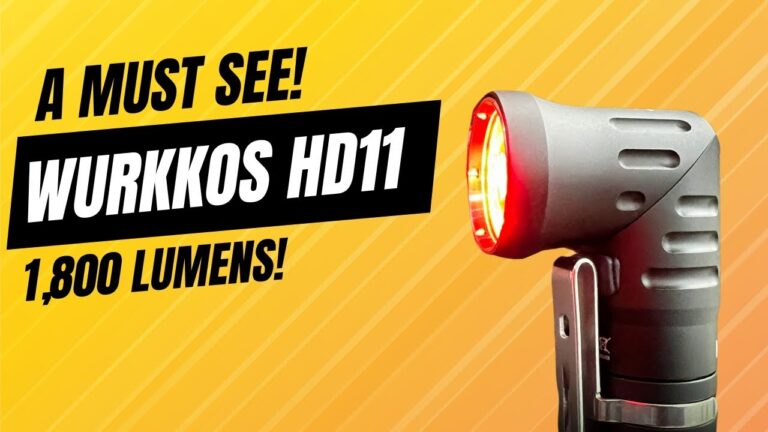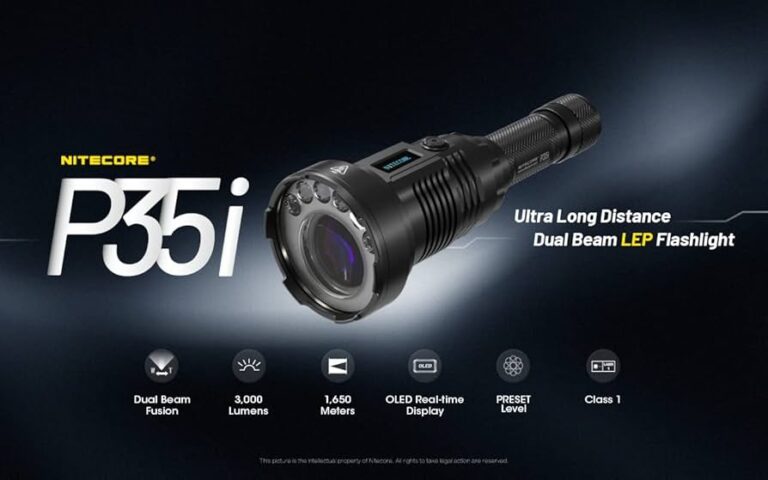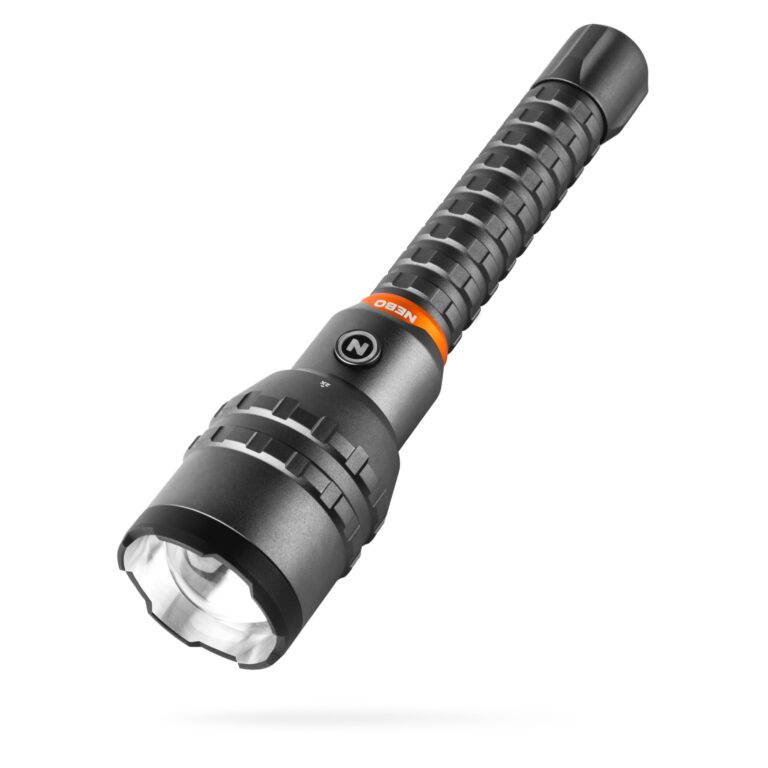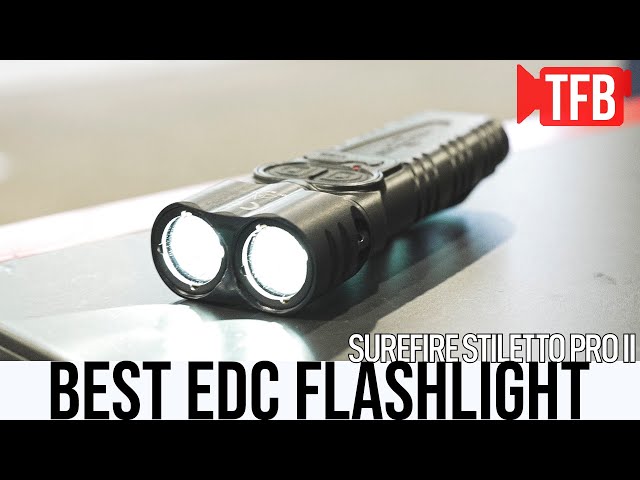ThruNite T1S V2 Review: Compact Powerhouse Flashlight
The ThruNite T1S V2 is a compact and versatile flashlight designed for everyday carry (EDC) enthusiasts and outdoor adventurers. In this review, we will explore its features, performance, and how it stacks up against competitors in the market.
The T1S V2 is known for its impressive beam throw, user-friendly interface, and durable construction, making it an excellent choice for various applications. We will provide a detailed analysis of its design, functionality, and battery life, helping you determine if this flashlight is the right fit for your needs.
Whether you are looking for a reliable light for camping, hiking, or emergency situations, the ThruNite T1S V2 promises to deliver exceptional performance.
Table of Contents
- Design & Build Quality
- User Interface and Operation
- Emitter and Beam Performance
- Battery Life and Charging
- Thermal Management and Regulation
- Competition Overview
- FAQ
- Conclusion
Design & Build Quality
The design and build quality of the ThruNite T1S V2 play a significant role in its appeal as an EDC flashlight. This section delves into the material composition, size, weight, and ergonomic features that contribute to its overall usability.
Material Composition
The ThruNite T1S V2 is constructed from durable aluminum alloy, which not only provides strength but also ensures it remains lightweight for everyday carry. The anodized finish offers additional protection against wear and tear, making it suitable for outdoor use.
The choice of materials reflects ThruNite’s commitment to quality and reliability in their products.
Size and Weight
Weighing in at approximately 63 grams with the battery included, the T1S V2 is very portable. Its dimensions make it easy to fit into pockets, bags, or even on keychains.
The compact size is particularly advantageous for users looking for a flashlight that won’t weigh them down during outdoor activities.
Ergonomic Features
The flashlight features a knurled body design that enhances grip, ensuring that it remains secure in hand during use. Its compact design allows for both a cigar grip and a reverse grip, adding to its versatility.
The tailcap switch is easy to access, further enhancing usability.
| Flashlight Model | Length (mm) | Weight (g) | Material |
|---|---|---|---|
| ThruNite T1S V2 | 98.3 | 63 | Aluminum Alloy |
| Weltool T1 Pro V2 | 100 | 89 | Aluminum Alloy |
| Nitecore MT1C Pro | 94.5 | 75 | Aluminum Alloy |
The table above compares the ThruNite T1S V2 with two other notable EDC flashlights: the Weltool T1 Pro V2 and the Nitecore MT1C Pro. Notably, the T1S V2 is the lightest among them, making it an attractive option for those prioritizing portability.
Its length is on par with the Nitecore but slightly shorter than the Weltool, which can enhance maneuverability in tight spaces. The choice of material across these models remains consistent, highlighting aluminum’s popularity in flashlight construction due to its balance of weight and durability.
User Interface and Operation
The user interface of the ThruNite T1S V2 is crucial for quick access during emergencies or daily tasks. This section outlines how to operate the flashlight, including its switch mechanism, available modes, and the overall user experience.
Mode Selection
The T1S V2 features three brightness modes: Low, Medium, and High. Users can easily switch between these modes using the tailcap switch, allowing for a straightforward operation that is vital in urgent situations.
The flashlight defaults to Medium mode upon activation.
Switch Mechanism
The flashlight employs a forward clicky mechanical switch. This allows users to achieve momentary on by half-pressing and a constant on by fully pressing.
The design is intuitive, though it lacks some advanced features such as strobe or SOS modes.
User Experience
Overall user feedback indicates that while the interface is simple, it could benefit from improvements in mode spacing. For instance, the Low mode is quite bright at approximately 31 lumens, which can be too intense for close-up tasks.
A more gradual progression between modes could enhance usability.
| Mode | Output (Lumens) | Runtime (Hours) |
|---|---|---|
| High | 520 | 1.5 |
| Medium | 230 | 3.5 |
| Low | 31 | 12 |
The mode chart above highlights the lumen output and runtime for each mode. The High mode, while providing an impressive 520 lumens, only lasts 1.5 hours, which is relatively short for high-output situations.
The Medium setting offers a balance between brightness and runtime, making it suitable for most tasks. The Low mode, providing a substantial runtime of 12 hours, is ideal for extended use in low-light conditions, though its brightness may be excessive for close-range tasks.
This data suggests that while the flashlight excels in high-output scenarios, users may need to adjust expectations regarding battery life when utilizing maximum brightness.
Emitter and Beam Performance
Beam performance is critical for any flashlight, especially for outdoor and tactical use. This section analyzes the ThruNite T1S V2’s emitter type, beam profile, and overall lighting performance.
Emitter Type
The T1S V2 utilizes a high-density X-LED, which is engineered for optimal brightness and efficiency. This type of emitter is known for its ability to produce a concentrated beam, making it ideal for long-distance visibility.
Beam Profile
The beam profile features a well-defined hotspot with a considerable throw distance. The hotspot is intense, providing focused illumination, while the spill is dimmer, making it less suitable for general utility tasks.
This characteristic is excellent for situations where distance is critical, such as search and rescue operations.
Performance in Various Environments
Users have reported that the T1S V2 performs exceptionally well in various environments, from urban settings to wilderness areas. Its ability to reach a throw distance of over 316 meters ensures that it can illuminate objects at considerable distances, making it a reliable choice for outdoor adventures.
| Setting | Output (Lumens) | Throw Distance (Meters) | Beam Angle (Degrees) |
|---|---|---|---|
| High | 520 | 316 | 10 |
| Medium | 230 | 210 | 15 |
| Low | 31 | 77 | 20 |
The beam performance metrics illustrate the significant throw capabilities of the ThruNite T1S V2. The High mode’s output of 520 lumens enables it to reach an impressive distance of 316 meters, making it an excellent choice for long-range visibility.
As the modes decrease, both the output and throw distance reduce, which is a standard feature among flashlights. The beam angle also widens slightly in lower modes, providing a greater area of illumination, albeit with reduced intensity.
This information can help users select the appropriate mode based on their specific lighting needs.
Battery Life and Charging
Understanding the battery specifications and charging options of the ThruNite T1S V2 is essential for users who rely on their flashlight for extended periods. This section examines its battery performance and efficiency.
Battery Specifications
The T1S V2 comes with a USB-C rechargeable 900mAh 14500 cell, providing versatility in power options. Users can also employ AA batteries, making it adaptable for various circumstances.
This dual compatibility is particularly useful in emergency situations where battery availability may be limited.
Charging Options
The integrated USB-C port allows for convenient and fast charging. Users can expect a reliable charging experience, with the battery indicating charge status through a color change from red to blue when fully charged.
This feature enhances the user experience by providing clear feedback on battery status.
Runtime Analysis
The runtime statistics for each mode reveal that the T1S V2 is efficient in its power consumption. While High mode provides maximum brightness for a limited time, the Medium and Low modes offer extended runtimes, making it suitable for prolonged use during camping or emergencies.
| Mode | Battery Type | Runtime (Hours) |
|---|---|---|
| High | Li-ion | 1.5 |
| Medium | Li-ion | 3.5 |
| Low | Li-ion | 12 |
The battery performance comparison table shows the runtime of the ThruNite T1S V2 across different modes. The High mode’s runtime of just 1.5 hours may be limiting for users needing extended operation at peak brightness.
However, the Medium mode extends runtime significantly to 3.5 hours, which is more suitable for general use. The Low mode’s remarkable 12-hour runtime allows users to conserve battery life during situations where maximum brightness is unnecessary.
This analysis emphasizes the flashlight’s flexibility, catering to both high-output needs and long-duration tasks.
Thermal Management and Regulation
Thermal performance is vital for maintaining optimal functionality and safety during extended use. This section discusses the thermal management features of the ThruNite T1S V2.
Heat Dissipation
The T1S V2 exhibits good heat dissipation due to its aluminum body, which helps prevent overheating during prolonged use at high outputs. Users have noted that while the flashlight can become warm, it remains manageable, ensuring safety during operation.
Regulation Features
However, the flashlight does not feature active thermal regulation. Instead, brightness follows battery voltage, which can lead to significant heat buildup during extended use on High mode.
Users must be cautious to prevent overheating by managing their use of this mode.
User Experience with Heat
Overall user feedback indicates that while the flashlight can get warm, it does not reach uncomfortable temperatures. The absence of thermal regulation may concern some users, but the build quality provides adequate heat management for most scenarios.
| Mode | Operating Temperature (°C) | Heat Regulation |
|---|---|---|
| High | Up to 50 | No Regulation |
| Medium | Up to 40 | No Regulation |
| Low | Up to 30 | No Regulation |
The thermal performance metrics indicate that the ThruNite T1S V2 can reach temperatures of up to 50°C on High mode, which is relatively high for flashlight operation. While it does not feature regulated output, the flashlight is designed to handle the heat generated during use.
Users should be aware of these temperatures, particularly when operating the flashlight for extended periods on High mode, as it may require periodic breaks to prevent overheating. This information is essential for users planning to use the flashlight in demanding environments.
Competition Overview
In a competitive market, understanding how the ThruNite T1S V2 stacks up against similar EDC flashlights can guide purchasing decisions. This section analyzes its key competitors in terms of features, performance, and pricing.
Key Competitors
The ThruNite T1S V2 faces competition from notable brands such as Weltool and Nitecore. Each offers unique features and pricing that appeal to different segments of flashlight users.
Comparison of Features
While the T1S V2 excels in throw performance, competitors may offer better user interfaces or additional features like multiple LED options or customizable modes, which some users might prefer. For example, the Weltool T1 Pro V2 provides a more customizable experience with different brightness settings and user-friendly design.
Pricing Analysis
Pricing varies significantly among competitors. The ThruNite T1S V2 is positioned as a mid-range option, offering a good balance of performance and price.
Some competitors may be cheaper, but it is essential to consider the trade-offs in terms of build quality and performance.
| Brand & Model | Price (USD) | Key Features |
|---|---|---|
| ThruNite T1S V2 | $49.99 | 520 Lumens, USB-C Charging |
| Weltool T1 Pro V2 | $39.99 | Customizable Modes, Good Build Quality |
| Nitecore MT1C Pro | $45.99 | Compact, High Lumen Output |
The table comparing pricing and features emphasizes the ThruNite T1S V2’s position in the market. Priced at $49.99, it offers substantial features such as high lumen output and USB-C charging, which are attractive to many users.
The Weltool T1 Pro V2 presents a more affordable option but may sacrifice some performance features. The Nitecore MT1C Pro, while slightly more expensive, matches the T1S V2 in compactness and lumen output.
This analysis highlights the importance of evaluating not just the price, but the overall value offered by each flashlight.
FAQ
What makes the ThruNite T1S V2 different from other flashlights?
The ThruNite T1S V2 stands out from other flashlights due to its impressive beam throw of up to 316 meters, coupled with a compact and lightweight design. Its superior lumen output of 520 lumens on High mode is notable, along with its user-friendly interface featuring a straightforward switch mechanism.
The inclusion of USB-C charging adds convenience, making it a versatile choice for both everyday tasks and outdoor adventures.
How does the battery life compare in different modes?
The battery life of the ThruNite T1S V2 varies significantly across its three modes. In High mode, it offers a runtime of approximately 1.5 hours, while Medium mode provides a more reasonable 3.5 hours.
The Low mode excels with an extended runtime of up to 12 hours, making it ideal for prolonged use in low-light situations. This variance allows users to select the mode that best suits their needs based on the duration of use.
Is the T1S V2 suitable for outdoor activities?
Yes, the ThruNite T1S V2 is highly suitable for outdoor activities. Its durable construction, impressive beam throw, and multiple brightness modes make it an excellent choice for camping, hiking, and emergency situations.
The lightweight design and ergonomic features enhance portability, ensuring that it can be easily carried during outdoor adventures.
What type of charging cable is required for the T1S V2?
The ThruNite T1S V2 utilizes a USB-C charging cable, which is included with the flashlight. Users can charge the flashlight using any standard USB-C cable, making it convenient for those who already possess devices that use this charging standard.
The charging process is simple, with an indicator light showing when the battery is fully charged.
Can the T1S V2 handle extreme temperatures?
The ThruNite T1S V2 is designed to operate in a range of temperatures, though specific limits are not explicitly stated. Generally, flashlights made from aluminum can handle various environmental conditions, but users should exercise caution in extremely high or low temperatures.
The flashlight’s thermal performance indicates it can handle moderate usage without overheating, but prolonged exposure to extreme temperatures should be avoided to preserve battery life and component integrity.
Conclusion
In conclusion, the ThruNite T1S V2 is a compact powerhouse that excels in performance, usability, and durability. With its impressive beam throw and user-friendly interface, it is a top contender in the EDC flashlight market.
This review has highlighted its strengths, including build quality, battery efficiency, and thermal management. Whether for everyday tasks or outdoor adventures, the T1S V2 proves to be a reliable companion.
As we wrap up, it is evident that this flashlight deserves a spot in your gear collection, particularly for those who value performance and portability in their EDC tools.







